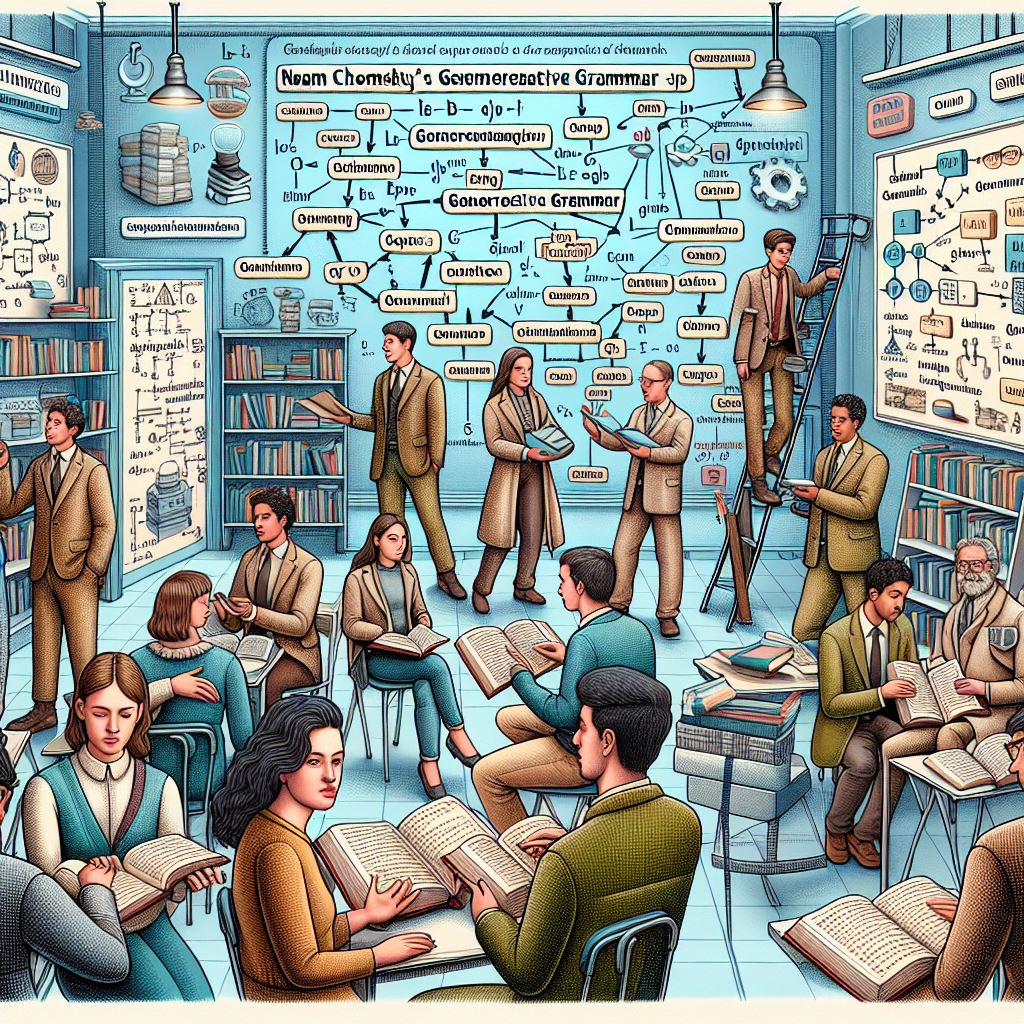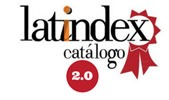La gramática generativa de Chomsky como marco fundamental en la adquisición del lenguaje
DOI:
https://doi.org/10.56124/sapientiae.v8i16.010Keywords:
Generative grammar, universal grammar, linguistics, languageAbstract
Generative grammar brings us closer to a set of rules or principles that fully predict the combinations that appear in grammatically correct sentences for a given language. Chomsky is one of the universal linguists who has transformed the most essential concepts of general grammar; his effort has paid off by making school with his exposition of generative grammar. One of the factors that may have caused and accelerated the considerable development of language acquisition studies in recent years is his ability to reflect on its own basic assumptions by combining through them, both the objections and the new relevant problems that appeared in the bosom of linguistic science. This article provides a brief overview of those determining approaches that characterize generative grammar as a radical theory of language acquisition.
Downloads
References
Aguilar, M. (2004). Chomsky la gramática generativa. Revista digital, 7(3), 15-22.
Aracil, L. V. (1970). Language and mind, de Noam Chomsky. Revista de estudios políticos, (169), 246-253.
Artal, A. G. (1972). [Review of El lenguaje y el entendimiento, by N. Chomsky]. Teorema:
Revista Internacional de Filosofía, 2(6), 139–141.
https://www.jstor.org/stable/43047631
Barón Birchenall, L., Müller, O., & Labos, E. (2013). Los conceptos innatos en la obra de Chomsky: definición y propuesta de un método empírico para su estudio. Avances en Psicología Latinoamericana, 31(2), 324-343.
Baker, M. C. (2008). The atoms of language: The mind's hidden rules of grammar. Basic books.184
Bernardo, J. M. (1995). La construcción de la lingüística. Un debate epistemológico (Vol. 9). Universitat de València. Birchenall, L. B., & Müller, O. (2014). La teoría lingüística de Noam Chomsky: del inicio a la actualidad. Lenguaje, 42(2), 417-442.
http://www.scielo.org.co/scielo.php?pid=S0120-34792014000200008&script=sci_arttext
Brown, R. (1973). A first language: The early stages. Harvard University Press.
Chomsky, N. (2004). Estructuras sintácticas. Siglo xxi.
Chomsky, N. (2014). Aspects of the Theory of Syntax. Massachusetts: The M.I.T. Press. Chomsky, N., Steinberg, D., &
Jakobovits, L. (1971). Deep
structure, surface structure, and semantic interpretation. 1971, 183-216.
Chomsky, N., & Gallego, Á. J.
(2020). La facultad humana del lenguaje. Un objeto biológico, una Ventana hacia la mente y un puente entre disciplinas. Revista Española de Lingüística, 50(1), 7-34.
Chomsky, N.: El lenguaje y el entendimiento. Traduc. de J.
Ferraté. Seix Barral,
Barcelona, 1971.
Fleitas-Guirland, C. C., & GriffinMcNeil, K. (2020). Un recorrido con los Principales Lingüistas y sus Aportes más significativos. Revista Internacional de Investigación en Ciencias Sociales, 16(1), 143-166.
García, L., Pascual, R. y Romero, D. (2013). Biolingüística (Gramática Generativa). En
R. Pascual, y D. Romero
(Eds.), Lenguaje y comunicación: Introducción a los principales problemas y perspectivas teóricas. (pp. 149-182). Buenos Aires: Nueva Librería.
https://sedici.unlp.edu.ar/handle/10915/91121
Gelormini, C. (2022). Análisis contrastivo y gramática mental en la adquisición de segundas lenguas. Lingüística, 38(2), 141-148.
Jenkins, L. (2002). Biolingüística.
Ediciones AKAL
Lasnik, H. (2000). Syntactic structures revisited: Contemporary lectures on classic transformational theory. MIT Press.
Lenneberg, E. (1975). Fundamentos Biológicos del Lenguaje.185 Madrid: Alianza Editorial.
López Serena, A. (2015). La tensión entre teoría y norma en la "Nueva gramática de la lengua
española": una falsa disyuntiva epistemológica. Boletín de la Real Academia Española, 95
(311), 143-166.
López Serena, A. (2003). Algunos aspectos epistemológicos de la lingüística contemporánea. Res
Diachronicae, 2, 212-220.
Matthews PH. N. Chomsky Aspects of the Theory of Syntax.
Cambridge, Mass.: M.I.T.
Press, 1965. Pp. x + 251.
Journal of Linguistics.
;3(1):119-152.
doi:10.1017/S0022226700012998
Mier, R. (2019). Condillac y el niño de Aveyron (1800): sensación y silencio. Ludus
Vitalis, 8(13), 71-90.
Morales, B. (1992). Hacia una visión generativista de la semántica lexical. Forma y Función, (6), 47-69.
Newby, D. (2011). Competence and performance in learning and teaching: theories and
practices. Selected papers on theoretical and applied linguistics, 19, 15-32.
https://ejournals.lib.auth.gr/thal/article/view/5476
Papalia, D. E., Duskin, R., &
Martorell, G. (2012). Desarrollo Humano. Mexico:
Mc Graw Hill.
Parker, F. (2001). Syntactic Structures Revisited: Contemporary Lectures on Classic Transformational Theory. Journal of English Linguistics, 29(2), 179-182.
Peris-Viñé, L. M. (1996). Caracterización de las nociones básicas de la Gramática de
Chomsky. Ágora, 15(2), 105-124.
Rodríguez, J. J., & Santana, A. M. M.
(2010). Adquisición y desarrollo del lenguaje. Psicología del desarrollo en la etapa de educación infantil, 2(5), 105-106.
Smith Watts, A. K., Patel, D.,
Corley, R. P., Friedman, N.
P., Hewitt, J. K., Robinson, J.
L., & Rhee, S. H. (2014).
Testing alternative hypotheses regarding the association between behavioral inhibition and
language development in toddlerhood. Child development, 85(4), 1569-1585.
Tapias, J. C., & Ruiz, L. F. N. (2007). Un vistazo a los pilares de la lingüística moderna: 186
Saussure, Chomsky y Van
Dijk. Del estructuralismo a la lingüística textual. Cuadernos de Lingüística Hispánica, (9), 83-96.
Varela Ortega, S. (2003). Léxico, morfología y gramática en la enseñanza de español como lengua extranjera. ELUA. Estudios de Lingüística, N. 17 (2003); pp. 571-588.
Villegas, R. J. S. Chomsky, N. (1999). Aspectos de la teoría de la sintaxis. Editorial Gedisa: España

Published
How to Cite
Issue
Section
License
Copyright (c) 2024 Revista Científica Multidisciplinaria SAPIENTIAE. ISSN: 2600-6030.

This work is licensed under a Creative Commons Attribution-NonCommercial-ShareAlike 4.0 International License.




2.jpg)








